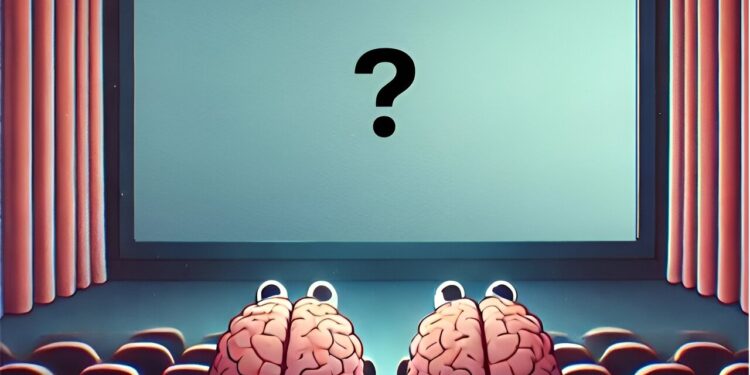Credit: Benjamin de Haas, AI-generated
Imagine two people sitting in a movie theater, each looking at the screen: do they see the same thing? Or does the film unfold differently in each of their minds? Researchers at Justus Liebig University Giessen (JLU) have found that it is the latter, and they have published their results in the journal Proceedings of the National Academy of SciencesIt turns out that viewers perceive different versions of the same movie in their brains, and these differences can be predicted by their unique eye movements.
Just as our bodies are made up of the same basic building blocks but vary from person to person, so too are our brains and their activity patterns. Neuroscientists use functional magnetic resonance imaging and machine learning to make these brain activity patterns comparable across individuals. Over the past decade, these techniques have allowed researchers to “translate” activation patterns between different brains.
Petra Borovska and Professor Ben de Haas, Ph.D., of the Johns Hopkins University School of Experimental Psychology, used this technology to study how individual eye movements affect our perception. They examined how well one person’s brain activity could predict another’s while 19 volunteers watched the same movie, either freely or passively staring at the center of the screen. Compared to passive viewing, natural eye movements led to much stronger activation of the brain’s visual centers. However, these activations were also more individual, making it harder to match one person’s brain activity to another’s.
“Traditionally, we’ve thought of eye movements as simply a response to what’s happening in front of us,” de Haas says. “But recent research shows that’s not the whole story. Eye movements are as unique as personality traits. Some people focus more on faces, while others are drawn to text or other elements.”
Results. (A) Interbrain decoding accuracy in fixation and free-viewing conditions for IT and V1. Each point represents a pair of observers (N = 171 pairs), the 0.24% chance level is indicated by red lines, and P values correspond to a GLME test of the effects of conditions on interbrain decoding accuracy. Credit: Proceedings of the National Academy of Sciences (2024). DOI: 10.1073/pnas.2405602121
Borovska adds: “We hypothesized that these individual viewing habits might create a unique ‘world’ in each person’s mind. We now know this is true. We could even predict how different brain activity patterns would be across people by measuring the similarity of their eye movements in a separate experiment conducted a few days apart.”
“It’s fascinating that while eye movements cause more neural activity, they also make those patterns of activity less comparable across individuals. Typically, a stronger signal means clearer data, but here the signal (the brain’s representation of the movie) is different for each person, like a director’s cut prepared by the individual brain.”
The team is now studying how eye movements develop over a person’s lifetime and how they affect our understanding of everyday scenes and tasks.
“There is still so much to learn,” de Haas says. “It makes us wonder: Next time you go to the movies, you might ask the person next to you, ‘What movie did you see?’”
More information:
Petra Borovska et al., Individual gaze shapes divergent neural representations, Proceedings of the National Academy of Sciences (2024). DOI: 10.1073/pnas.2405602121
Provided by Justus-Liebig-University Giessen
Quote:So, what movie did your brain see? Eye movements can create different versions of the same movie in our heads (2024, September 3) retrieved September 3, 2024 from
This document is subject to copyright. Apart from any fair dealing for the purpose of private study or research, no part may be reproduced without written permission. The content is provided for informational purposes only.



